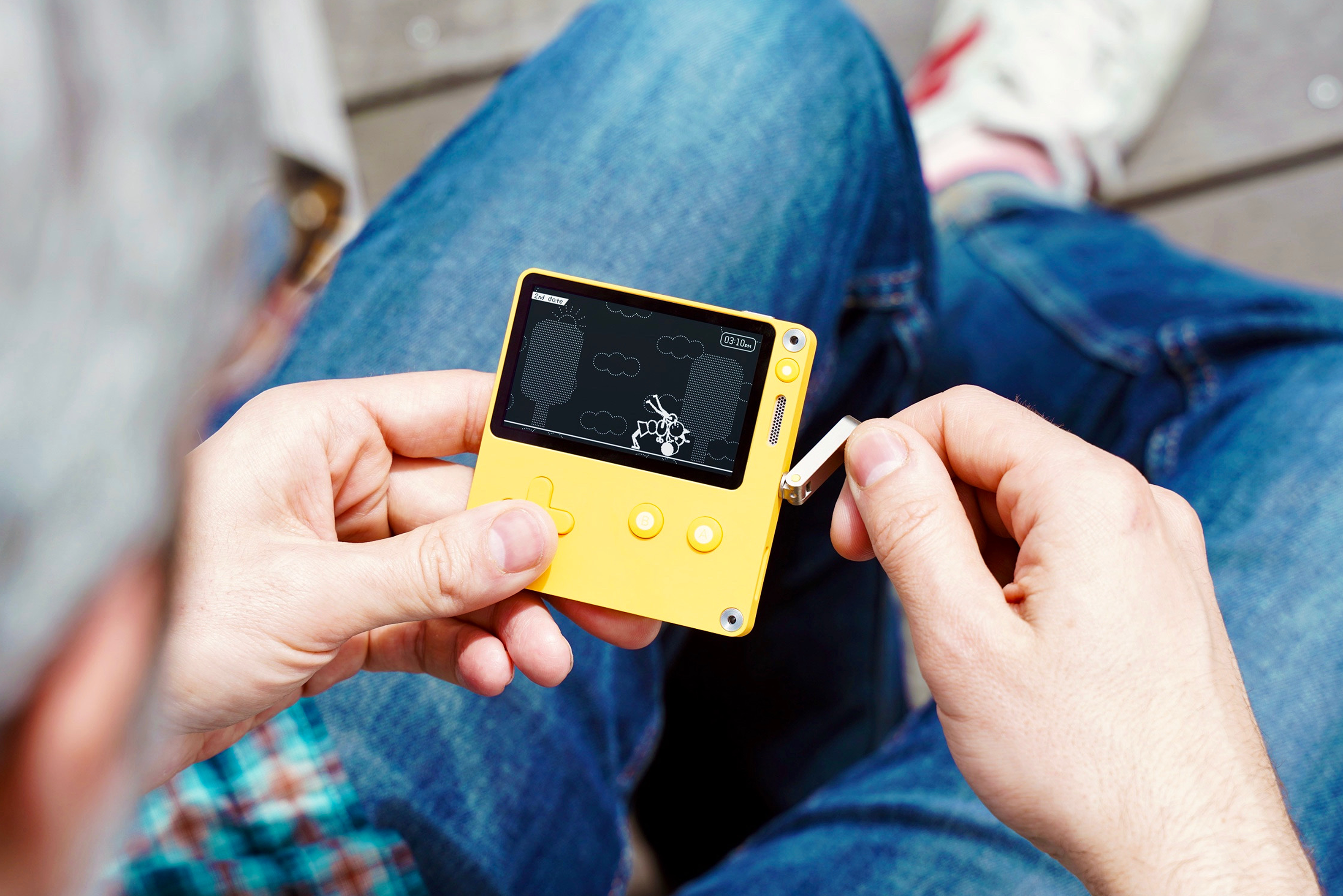How to sew: beginners
Our pro sewist shares her advice in 'how to sew: beginners', a skills guide for all newcomers.
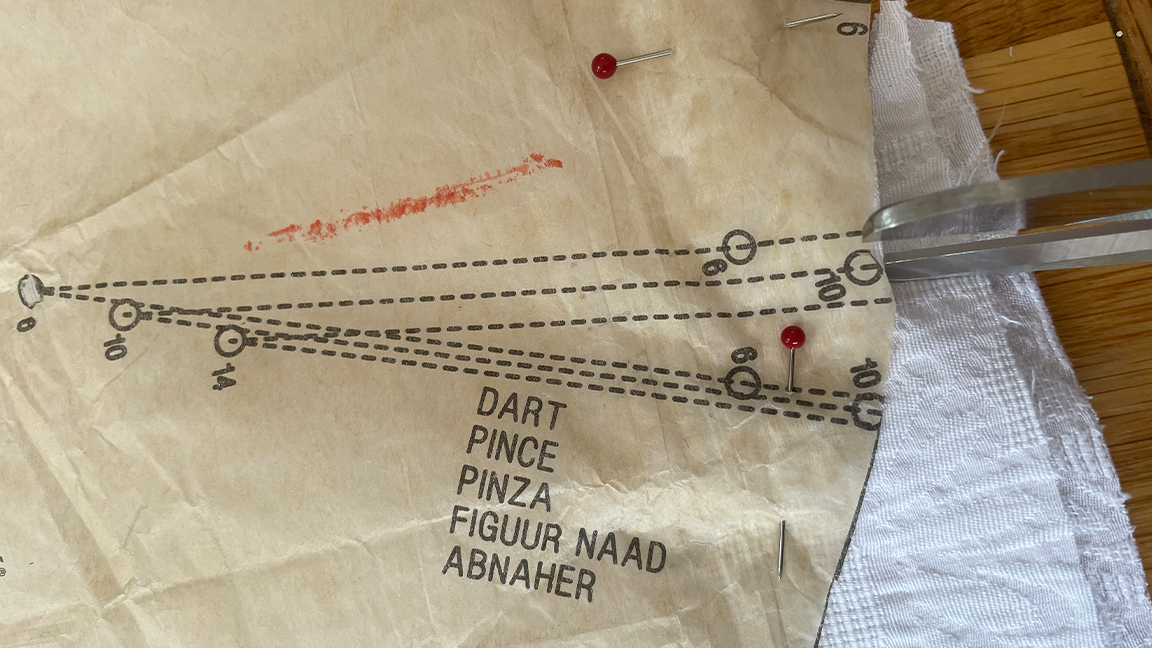
This 'How to sew: beginners' guide will help you get started in what I hope will become a passionate hobby or even a new career. If you're looking to start sewing your own fabulous handmade wardrobe then you'll need to learn the beginner sewing essentials I'll cover in this feature.
I’ve put together a quick and handy guide to take you from setting up your machine to sewing some commonly occurring features in dressmaking; the basic sewing skills everyone should know. If you're completely new to sewing then you'll need a machine, so read my guide to the best sewing machines (I cover affordable, beginner and more complex sewing machines).
Great garments start with great preparation, so I’ll look at how to set up your machine, select your pattern size and how to transfer the information on the pattern to your fabric. Whatever you choose as your first project, you need to do these three things correctly to ensure a good result. If you want to complement your sewing process, consider one of the best Cricut machines for cutting or the best heat press machines for adding designs to projects.
As darts and gathers often feature in beginner sewing patterns (and beyond!), I’ll share my top tips for sewing these with ease and confidence. As darts are an effective way to create shape and structure in your garments, mastering them means you’ll be able to sew more fitted pieces. Whilst sewing gathers will enable you to fit sleeves, create ruffles and add fullness in a garment.
How to sew: beginners
Below I'll take you through the basic sewing skills everyone should know, beginning with the simple tasks and then some core techniques that can be applied to all your sewing projects.
Setting up your sewing machine
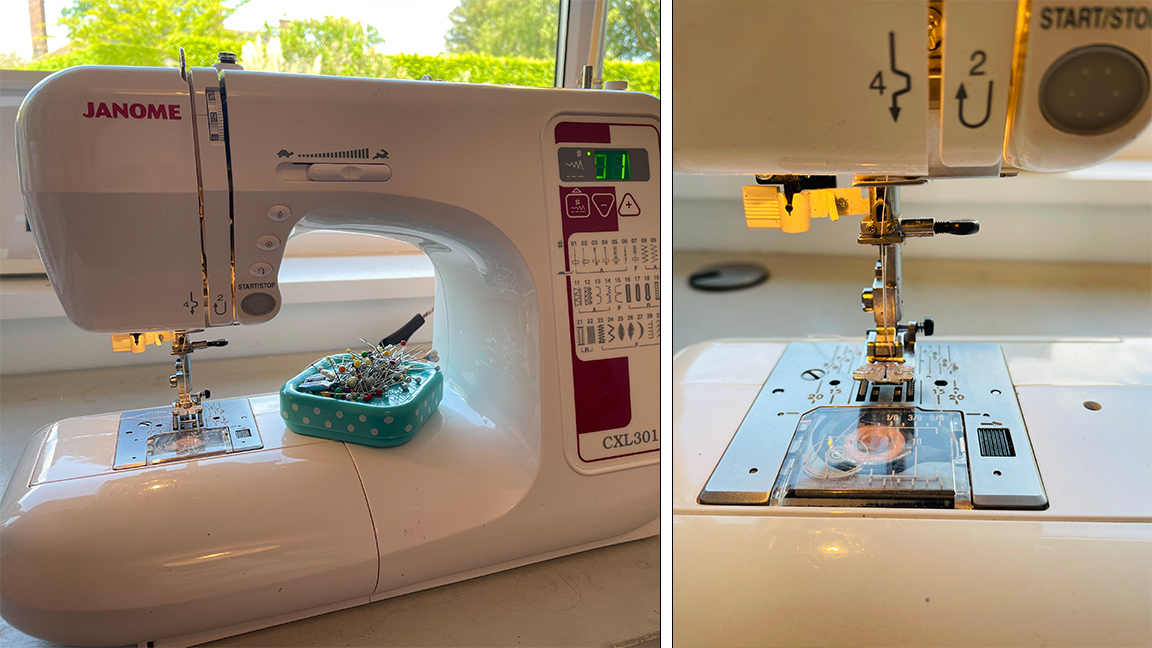
It’s much simpler than it might first appear to thread a sewing machine, so don’t let this initial step deter you from getting started with sewing. With practice, threading a machine takes seconds.
Although the process is pretty similar for all machines, it’s best to refer to your user’s manual or an online video to see how to thread your specific machine. I recommend cutting your thread on a diagonal to help thread it through the needle’s eye.
Thread your needle from the front to the back, with the pressure foot raised and the needle in its highest position. Always test your stitching on a scrap piece of the fabric you will be using for your project.
Selecting your pattern size
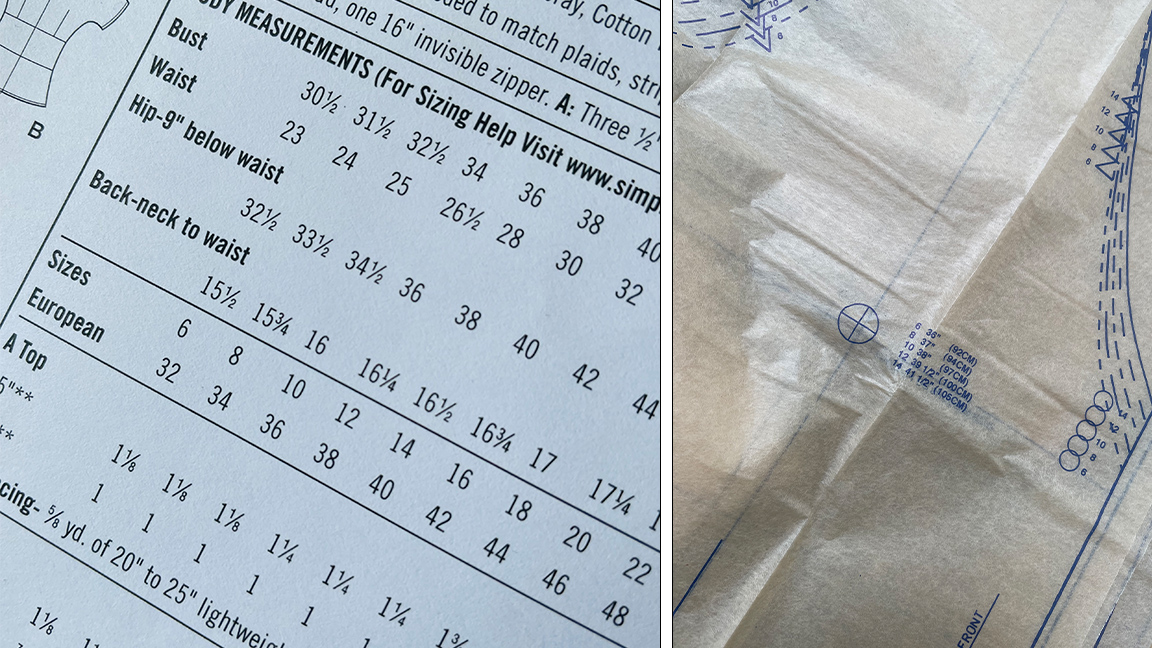
Sewing pattern sizes and ready-to-wear clothing sizes are not the same. You might wear a size 12 dress but it’s unlikely that this will equate to a size 12 on a sewing pattern.
It’s therefore crucial to take accurate body measurements as your first step. Which measurements you need depends on the garment you wish to make. Trousers need your waist and hips, a blouse your bust and waist and a dress needs all three.
Check the pattern envelope to ensure the pattern covers your measurements and use the size it suggests for your measurements as a starting guide. Refer to the pattern pieces to see the actual finished garment sizes to decide if you need to go bigger or smaller.
Transferring pattern markings
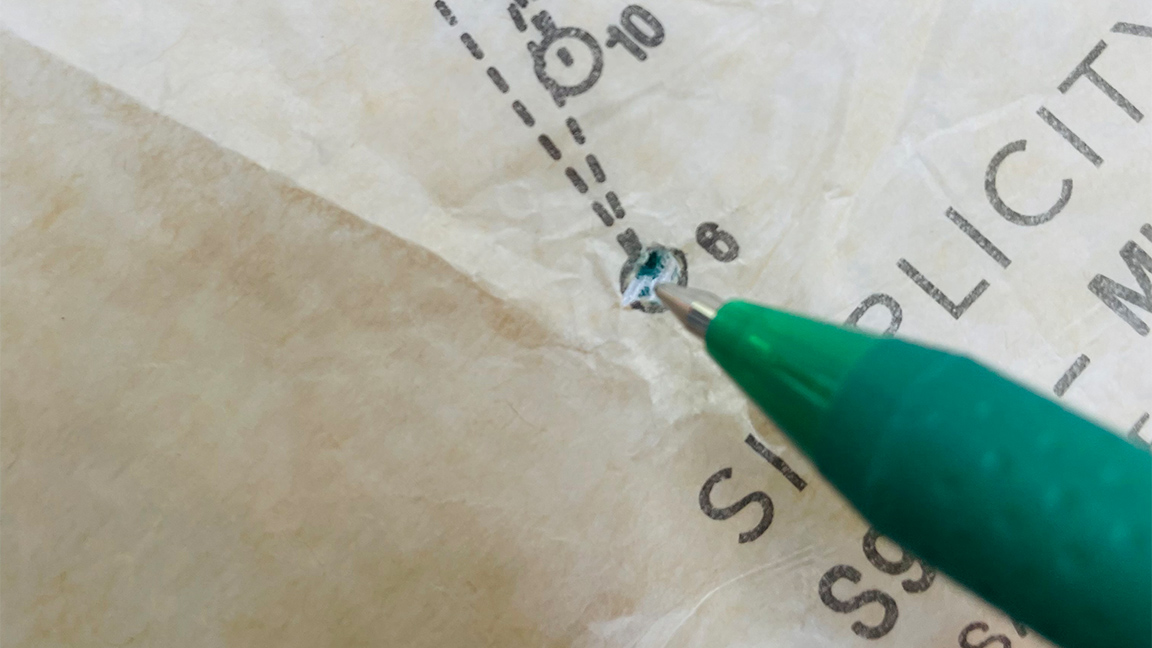
You need to transfer all the information on the pattern pieces to your fabric. Such information could be the placement of darts, buttonholes and pockets and notch markings to show where two fabric pieces should meet.
Whilst you can use traditional tailor’s tacks to mark anything represented by a circle on the pattern pieces (such as gathering points, pivot points and the end of darts), it’s much quicker & easier to use either chalk or a fabric marker.
Make a hole in the circle on the pattern paper with either a pin or a holepunch and mark with the chalk or marker. Put a pin through your mark to show you where to mark the same point on symmetrical pieces.
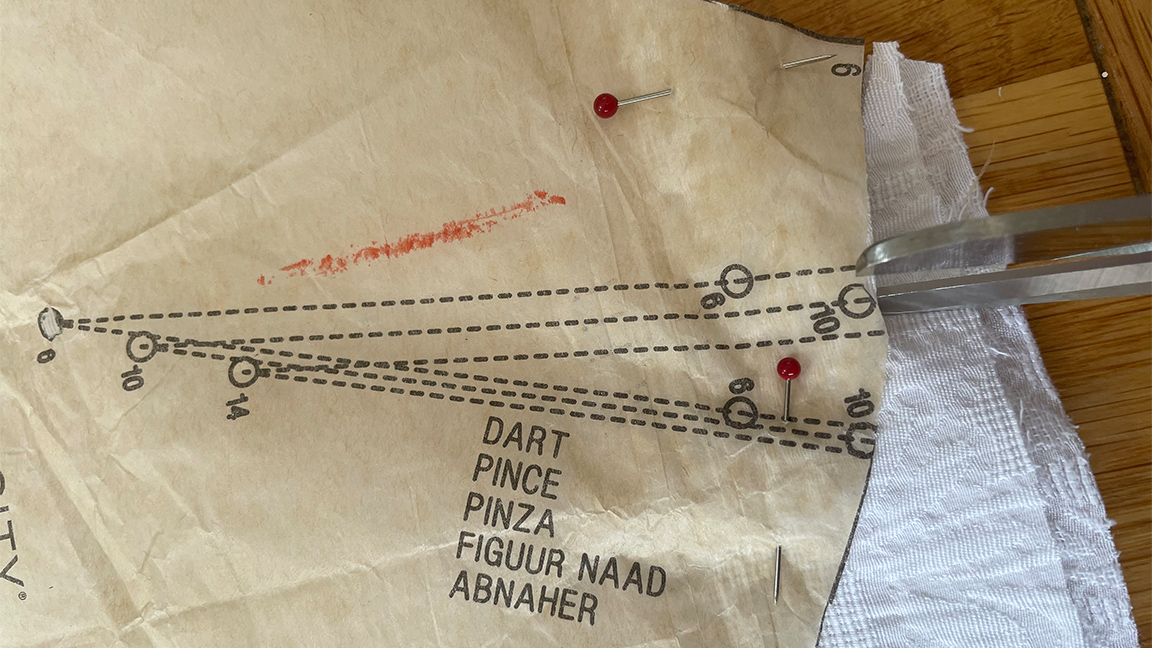
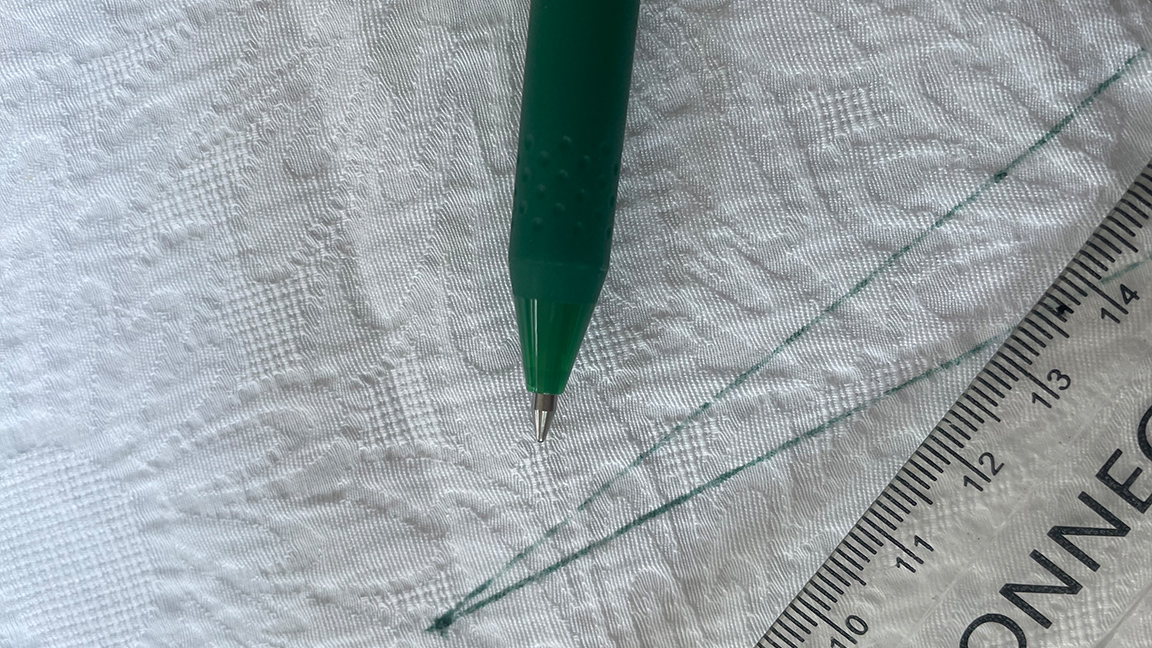
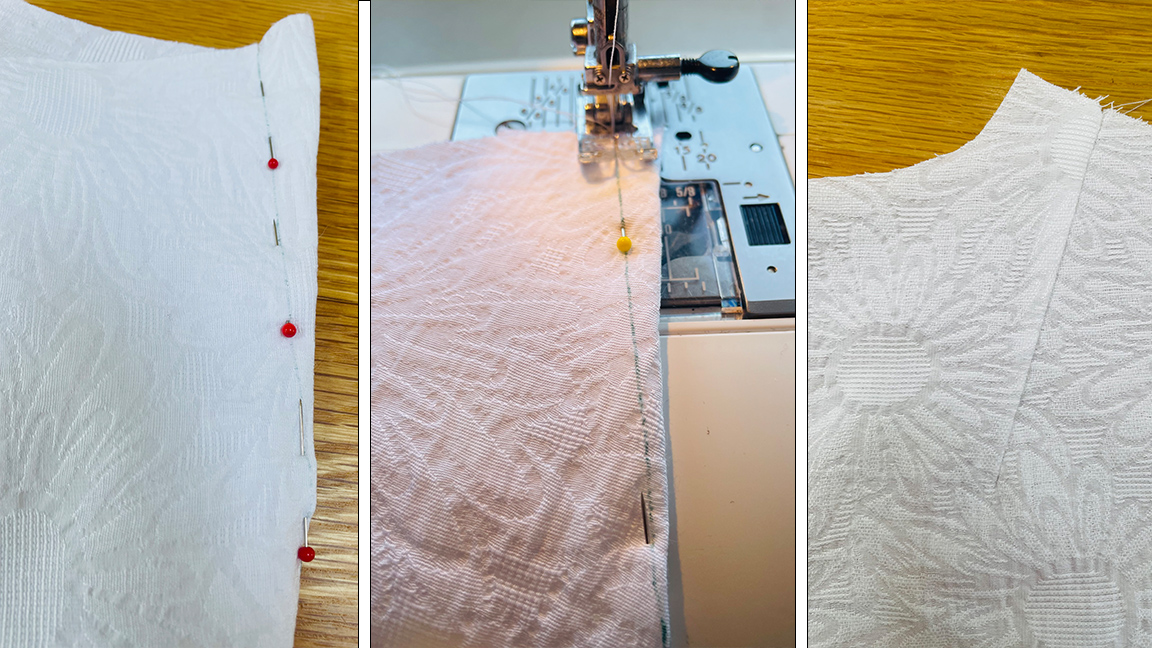
Sewing darts
Sewers favour different methods for sewing darts, this is mine. However, all will agree that sewing a neat dart starts with careful transformation of the dart placement information on the pattern piece to your fabric.
I carefully make tiny snips with just the tip of my scissors at the end of the dart ‘legs’ (with a knit fabric or a fabric very prone to fraying, use a fabric marker instead). Mark the dart end as described in transferring pattern markings.
With the right sides of your fabric together, line up your two snips with your circle marking where the fabric folds. Draw a line with your chosen marker to connect the snip to the circle and repeat on the other side.
Stitch along the line from snips to circle, without reverse stitching at the circle. Leave long threads to tie a knot at the circle to secure. Iron along both sides of your stitching line before pressing the dart down.
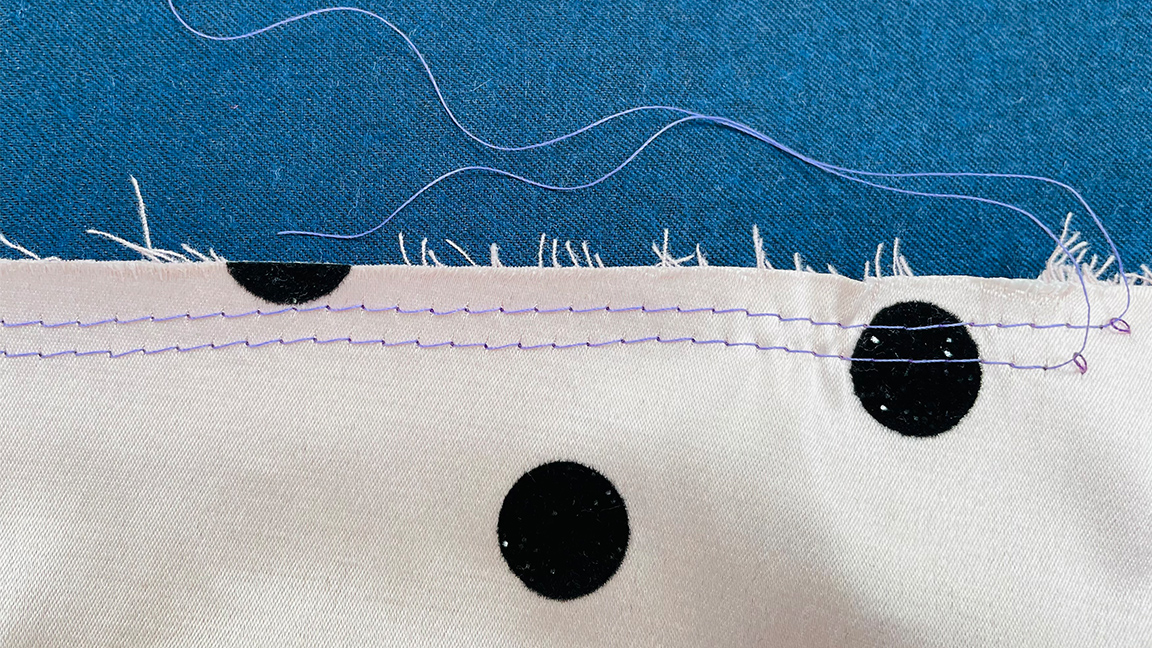
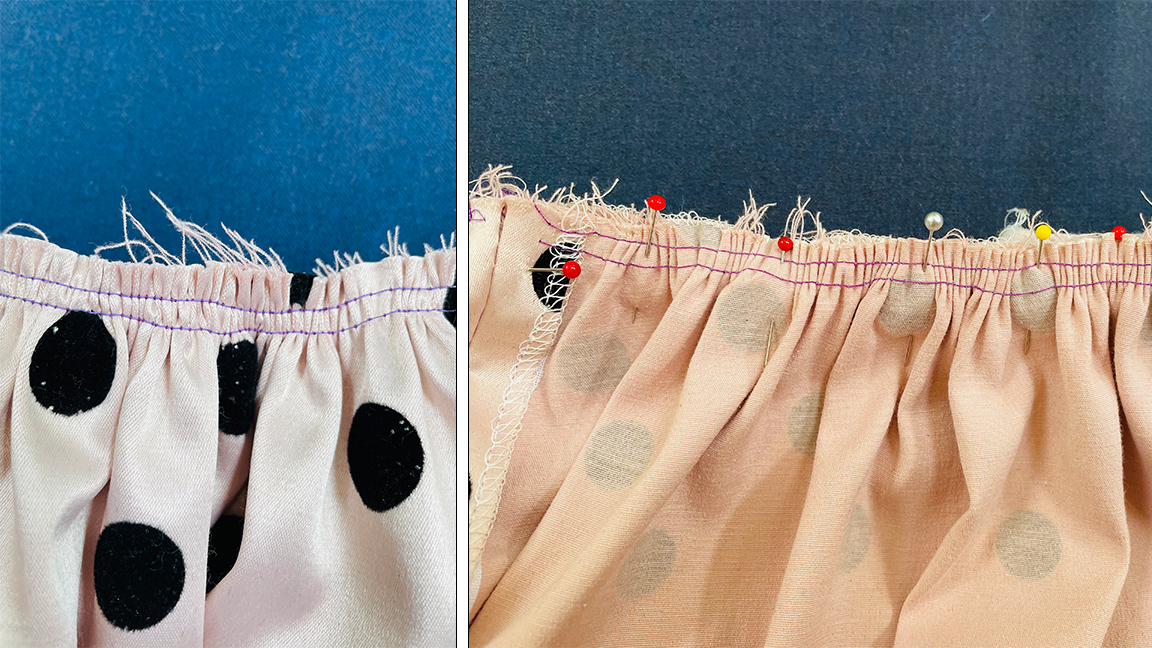
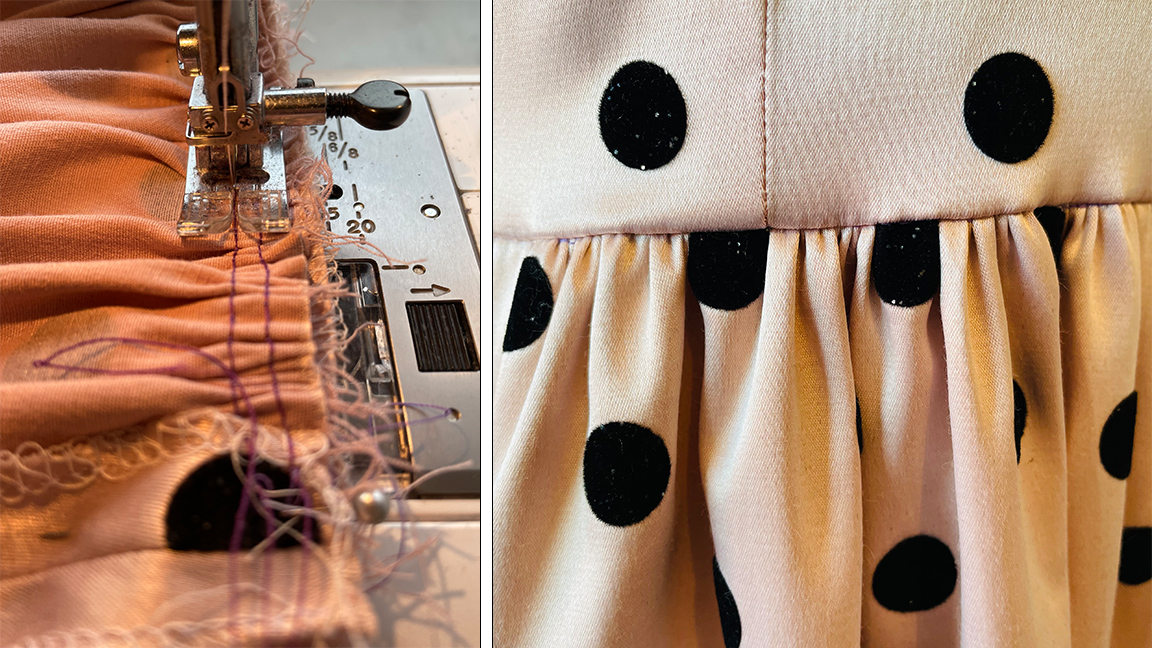
Sewing gathers
Thread your machine with a different colour thread to that of your fabric. This will make it easier to see your gathering stitches when it comes to removing them and saves the thread colour you need for your project. Set your machine stitch length to the longest it will go.
Leaving long thread tails at the start and end, stitch two lines between your gathering point marks. It’s important not to secure these stitch lines. Gently pull on the bobbin threads of both stitch lines to start gathering up the fabric.
Pin the gathered section at both ends to the fabric piece it needs to fit and adjust your gathers evenly until the gathered section is the required size. Secure with pins and baste before your final stitching. Remove your gathering stitches!
What equipment do I need to start sewing?
Not much! Besides a sewing machine, the only tools and equipment that you will struggle to do without are pins, a tape measure, fabric scissors, an unpicker and chalk or fabric markers. Take a look at our guide to the best Cricut accessories, as the tools are the same.
How do I choose a sewing machine?
Decide on your budget. Consider what you will mainly be using the machine for and look for a machine with the relevant helpful functions. You can read my guide to choosing the best sewing machine for beginners to find a good one for you.
What’s a good beginner’s sewing project?
For your very first project I would recommend avoiding anything that requires careful fitting. So a tote bag, cushion cover or pyjama bottoms are great to get started. You can read my guide to how to start to sewing for more advice on the best projects to begin with.
Get the Creative Bloq Newsletter
Daily design news, reviews, how-tos and more, as picked by the editors.

Thank you for reading 5 articles this month* Join now for unlimited access
Enjoy your first month for just £1 / $1 / €1
*Read 5 free articles per month without a subscription

Join now for unlimited access
Try first month for just £1 / $1 / €1
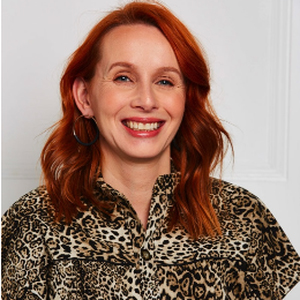
Michelle is a sewing teacher, writer and maker based in the Peak District. As a dressmaking tutor and freelance craft feature writer Michelle regularly writes for Love Sewing magazine as well as Woman's Weekly & Woman & Home. As a sewing tutor and avid dressmaker she has extensive knowledge of sewing machines and overlockers, and the know-how of how to match different dressmakers' needs and budgets to the right machine for them.
- Ian DeanEditor, Digital Arts & 3D
